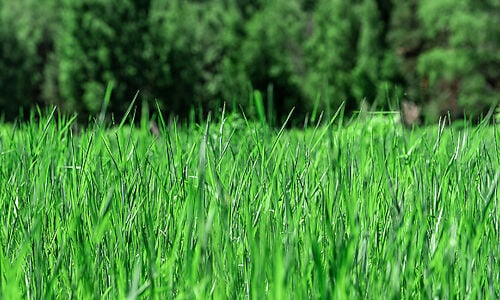
March 2nd, 2023 by
Garden trends tend to be influenced by themes, colours, and layouts but this year we can draw clear parallels between what we do in our outdoor space and the things that are affecting our lives such as climate change, sustainability, mental health, and even the cost of living crisis.
Here are 6 garden trends for 2023 that can improve our outdoor spaces and our lives.
All weather planting
Any gardener will know that we get the best results from our gardens when we plant according to the specific conditions we get in our own gardens. However, as our weather becomes increasingly extreme, and we experience everything from flooding to heat waves in the same season, this becomes more difficult to achieve. In 2023, gardeners are increasingly looking to more robust and resilient planting that can withstand a range of weather conditions. This does limit your options, but your planting will last much longer and also deliver better value for money. Consider plants such as geranium Rozanne, Burning Daylight, Roseraie de l'Haÿ', or trees such as the Himalayan Birch, Silver Shadow.
Improving soil quality
Soil quality is vital for strong plant growth, but we are not all blessed with fertile soil in our gardens. As peat-based composts are being phased out to preserve natural peatlands, we need to find more sustainable ways of improving soil quality as well as choosing the most appropriate plants for the soil that we have. Adding nitrogen to soil can be beneficial, either through adding iron sulphate or seaweed supplements, or growing plants such as comfrey and winter beans to be used as mulch. Drought-tolerant plants can often thrive in poorer quality soil and there is an extra benefit in that weeds such as nettles and thistles will find it harder to become established.

Creating wildlife habitats
Greater biodiversity benefits gardens for a number of reasons. For example, creating habitats for pollinators such as bees and butterflies improves plant quality, attracting and supporting birds and hedgehogs can be joyful, and many creatures can improve soil quality, be good pest controllers, and play an important part in the food chain. 2023 will see more people actively creating good conditions for wildlife, such as incorporating considered planting and shelter for different creatures.
Re-wilding
An important part of encouraging biodiversity is moving away from meticulously neat, minimalist gardens and allowing them to grow a little wild. Longer grass, overgrown foliage, and even letting weeds grow offer both food and shelter to insects, invertebrates, arachnids, and creatures such as hedgehogs. ‘Tapestry’ lawns are therefore tipped to be popular this year, with lawns allowed to grow out into more meadow-like areas in parts with grass interspersed with plants such as yarrow, cornflowers, and yellow rattle.

Embracing ‘undesirables’
While we usually think of ‘desirable’ wildlife that we want to attract to our gardens, such as those mentioned above, we will increasingly see gardeners encouraging less-well-loved species in such as slugs that can help recycle decaying vegetation, aphids that provide food for ladybirds and lacewing larvae, and wasps that control caterpillars.
Sensory gardens for mental health
Gardens are more than just pretty areas to look at, they create usable living spaces where we can socialise, entertain, and relax. In these challenging times, they can also serve as a restorative environment for self-care. The process of gardening has always been hugely beneficial to mental health and in 2023 there is a growing desire to create sensory spaces that boost well-being through colour, scent, and tranquillity. Choose to plant for their aromas as much as their visual appearance and use high and dense planting to create private, relaxing sanctuaries.
Comments
Leave a reply
Your e-mail address will not be published. All fields are required


